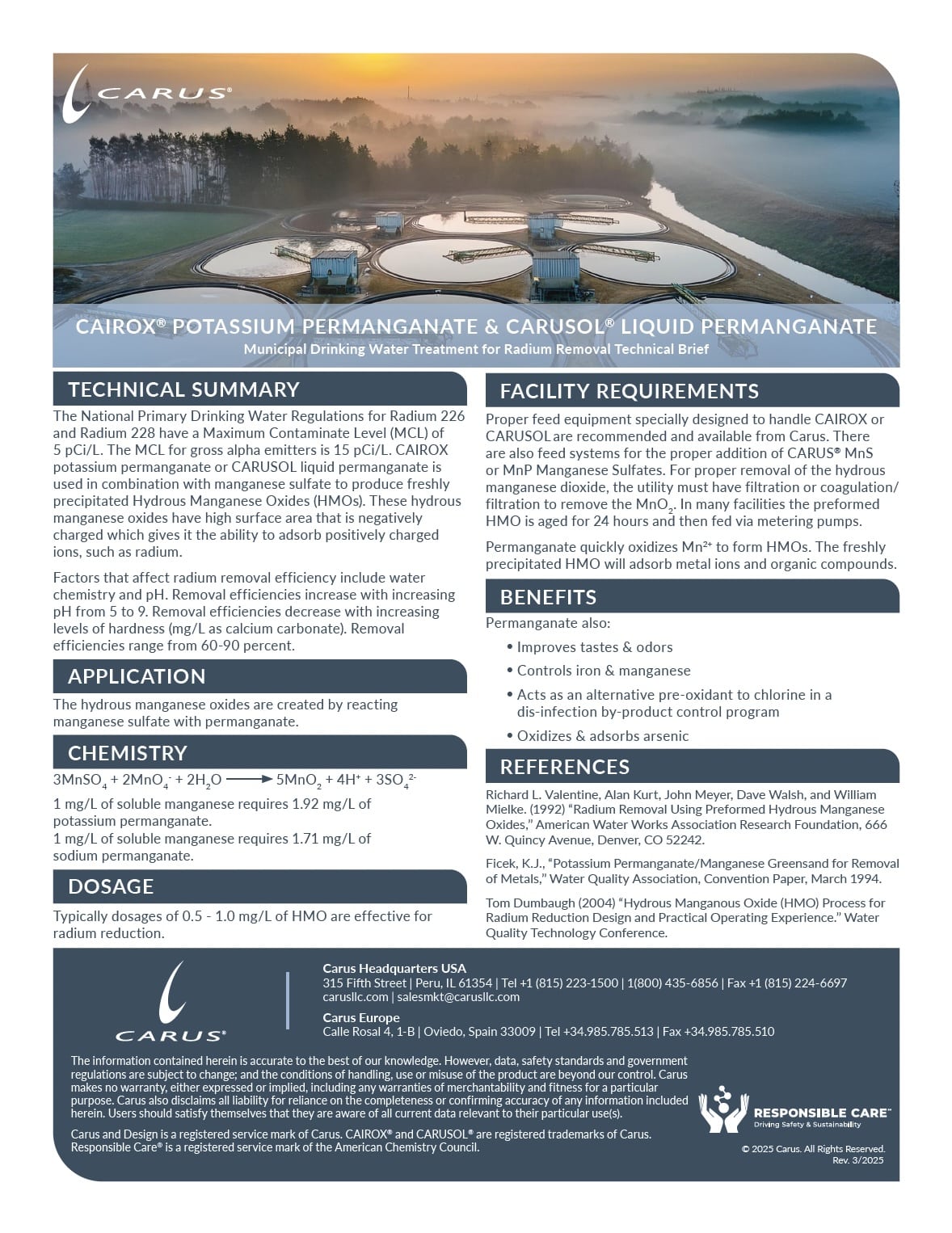Health Risks of Radium in Drinking Water
Radium is a naturally occurring radioactive element found in groundwater, particularly in areas with certain geological formations such as granitic or carbonate aquifers. It poses significant health risks due to its radioactive properties:
- Carcinogenic Effects: Radium and its decay product, radon, are both known to cause cancer. Prolonged exposure to radium in drinking water has been linked to an increased risk of bone cancer.
- Bioaccumulation in Bones: Radium behaves similarly to calcium in the body, accumulating in bones where it can damage bone marrow and increase the risk of leukemia.
- Global Regulations: To safeguard public health, many government agencies enforce Maximum Contaminant Levels (MCLs) for combined radium-226 and radium-228. Non-compliance with these standards can lead to penalties and raise serious community health concerns.
Geological and Regional Challenges
Radium contamination is often region-specific, requiring tailored solutions:
- Groundwater Contamination: Radium is most commonly found in deep aquifers, making it prevalent in groundwater supplies for municipal and private wells.
- Regional Hotspots: Certain areas in the U.S., such as the Midwest and parts of the East Coast, experience higher levels of radium due to unique bedrock compositions.
- Dissolution from Aquifers: Radium dissolves into water as a byproduct of uranium and thorium decay, meaning areas with uranium-rich geology are particularly susceptible.
Consumer Trust and Regulatory Compliance
Failing to mitigate radium effectively can have long-term consequences:
- Public Health Concerns: Radium contamination in drinking water erodes consumer confidence and raises health concerns, even when levels are below regulatory limits.
- Reputational Risks: Utilities failing to address radium issues risk damage to their reputation and a loss of trust from the community they serve.
- Regulatory Oversight: Non-compliance with US EPA or state radium limits can result in fines, increased scrutiny, and mandated upgrades to treatment processes.
Operational and Treatment Challenges
Radium mitigation presents technical and operational complexities for water utilities:
- Detection at Low Levels: Radium is radioactive at very low concentrations, requiring sensitive analytical techniques for monitoring.
- Water Chemistry Interference: The presence of other contaminants, such as iron, manganese, calcium, or sulfate, can complicate radium removal processes.
- Residuals Management: Radium treatment generates waste streams containing concentrated radioactive material, necessitating careful handling, storage, or disposal to comply with environmental regulations.
- Infrastructure Impact: Radium accumulation in distribution system sediments can lead to secondary contamination, requiring periodic cleaning or replacement of affected infrastructure.
Environmental Implications
Beyond public health, radium in water systems can have broader environmental consequences:
- Radon Release: Radium decays into radon gas, which can escape into the atmosphere, contributing to indoor air quality concerns in homes and buildings using contaminated water.
- Groundwater Sustainability: Radium contamination can limit the long-term usability of affected aquifers, requiring costly remediation or the development of alternative water sources.
How Carus Can Help
Carus utilizes manganese dioxide, a byproduct of permanganate oxidation, to adsorb and remove radium:
Safe, Proven Processes:
Effective and compliant radium removal solutions.
Flexible Integration:
Adaptable to municipal and industrial systems.
Solutions in Action
- Comply with strict US EPA radium removal requirements.
- Protect community health with sustainable solutions.
Protect Public Health with Radium Solutions:
Talk to our experts about radium removal solutions today.


